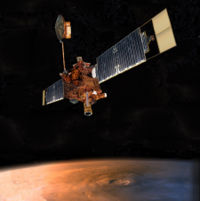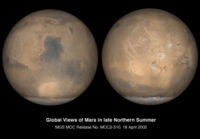Difference between revisions of "Mars Global Surveyor"
| Line 11: | Line 11: | ||
Stay with me for any second if you will. Envision wainkg up each and every morning and becoming so anxious and ecstatic to get to perform. No more exhausting commutes, no inner office politics, just YOU YOUR Organization YOUR WAY. | Stay with me for any second if you will. Envision wainkg up each and every morning and becoming so anxious and ecstatic to get to perform. No more exhausting commutes, no inner office politics, just YOU YOUR Organization YOUR WAY. | ||
| − | + | At 1/100 of Earth's atmospheric preussre would there even be enough friction to cause the meteor to incandesce ? Maybe we could ask whoever is throwing those impactors at Mars to attach a parachute to slow them down so the MRO can get a good picture.BTW I seem to remember that one of the first objects photographed by one of the rovers was thought to be a meteorite. Awesome! | |
| − | |||
| − | |||
| − | |||
| − | |||
| − | |||
| − | |||
| − | |||
| − | |||
| − | |||
| − | |||
Revision as of 18:02, 9 May 2012
NASA's Mars Global Surveyor was launched on November 7, 1996 from Cape Canaveral Air Force Station (Florida) on a McDonnell Douglas-built Delta II-7925 rocket. Mars Global Surveyor was the first successful US mission launched to Mars in 20 years since the Viking mission in 1976. On November 2, 2006 it was lost due to loss of power (through incorrect alignment of the solar panels). On arriving into Mars orbit, the Mars Reconnaissance Orbiter made attempts to image the lost Mars Global Surveyor so mission control could diagnose the problem, but the spacecraft could not be found.
Observations from the Mars Global Surveyor orbiter are used on the interactive Google Mars website.
Mission Overview
In its highly successful decade of operations, the Mars Global Surveyor orbiter became the longest-lasting Mars mission collecting a massive quantity of data about the Martian environment.
Stay with me for any second if you will. Envision wainkg up each and every morning and becoming so anxious and ecstatic to get to perform. No more exhausting commutes, no inner office politics, just YOU YOUR Organization YOUR WAY.
At 1/100 of Earth's atmospheric preussre would there even be enough friction to cause the meteor to incandesce ? Maybe we could ask whoever is throwing those impactors at Mars to attach a parachute to slow them down so the MRO can get a good picture.BTW I seem to remember that one of the first objects photographed by one of the rovers was thought to be a meteorite. Awesome!








